The Relative Strength Index (RSI) evaluates the strength of a trend by analyzing the open and close prices of candles over different timeframes (14 days by default).
Therefore, this indicator is used in most trading strategies, including divergence, trendlines, and more.
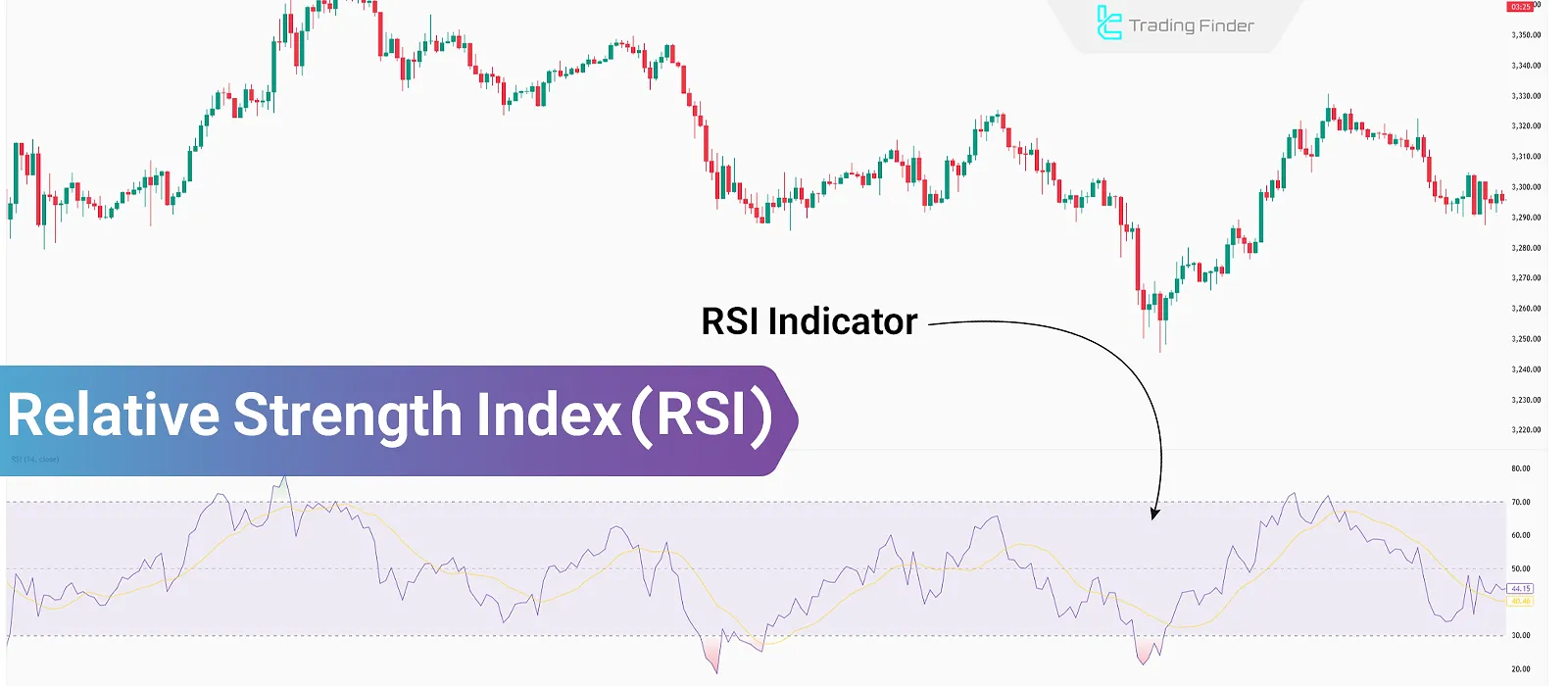
This indicator consists of five components including RSI line, moving average, level 50, level 70, and level 30.
By analyzing the movement of these elements, it becomes possible to identify divergence, overbought and oversold zones, support and resistance, and more.
What Is RSI?
RSI is an oscillator used to evaluate the strength of a price movement. This indicator identifies overbought or oversold zones by analyzing historical market factors such as momentum.
RSI moves between 0 and 100. Therefore, when it rises above the 70 level, it indicates overbought conditions, and when it drops below 30, it signals oversold conditions.
Components of the Relative Strength Index
The relative strength index consists of five main components, and the interaction between these elementsو plays an essential role in analyzing momentum and pricetrends.
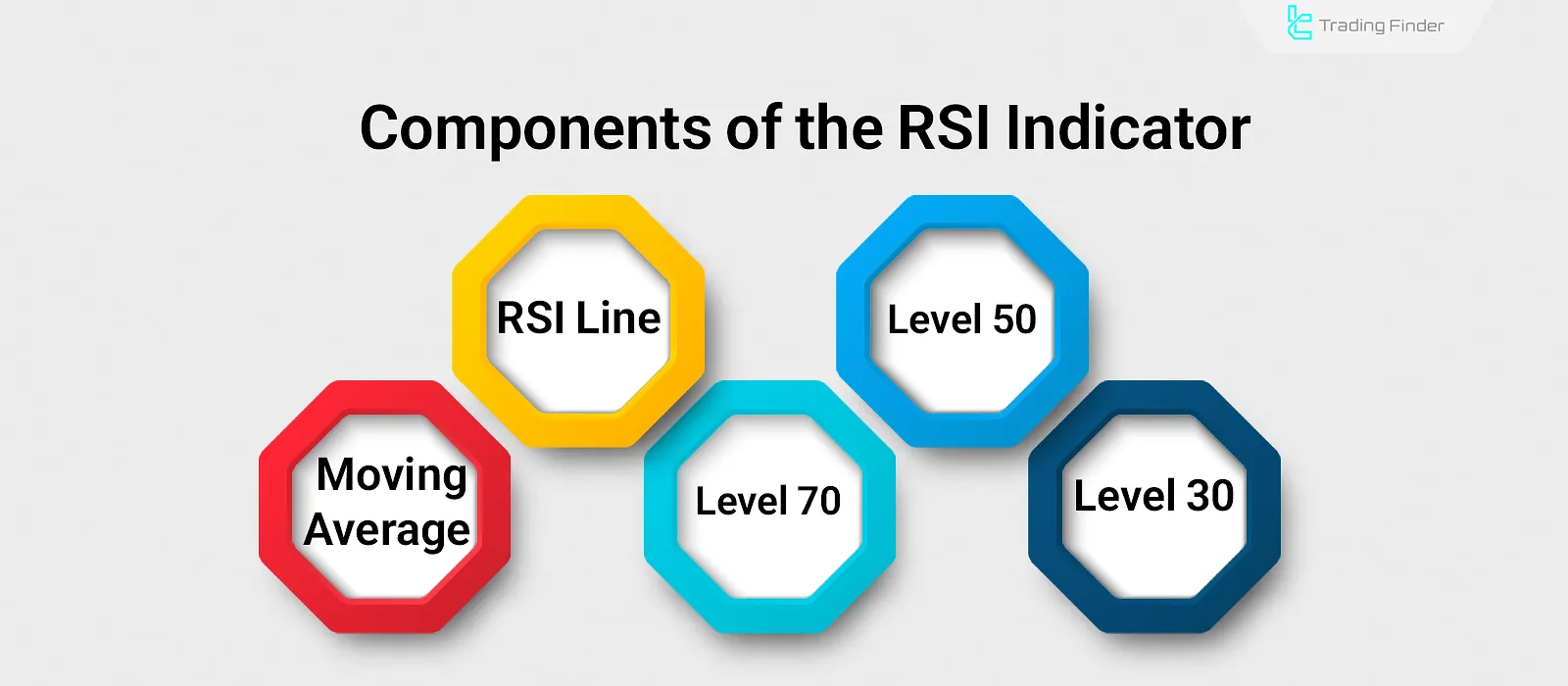
Components of the Relative Strength Key components of the RSI indicator include RSI line and moving average Index:
- RSI Line: The main element of the RSI indicator, calculated using a specific formula to reflect the relative strength of price;
- RSI Moving Average: This line represents a moving average of the RSI line. Its intersection with the RSI line may generate a trend reversal signal;
- Level 70: Defines the upper area of the RSI display; when the RSI line crosses above this level, it indicates overbought conditions;
- Level 50: Divides the indicator display into two halves; reaching this level signifies a potential support or resistance area;
- Level 30: Represents the oversold zone; when the RSI line enters this region, it signals an early indication of potential price reversal.
Advantages and Disadvantages of RSI
Using the RSI indicator is straightforward due to the clarity of its signals. However, relying solely on this indicator may not yield a high success rate in trading.
Therefore, to enhance effectiveness, it should be combined with other technical analysis concepts.
Advantages | Disadvantages |
High clarity of signals | Delay in signal generation |
Easy to use | Possibility of false signals |
High compatibility with other tools | Requires combination with other analysis methods |
Usable in all financial markets | Weak performance in ranging markets |
How to Calculate the RSI Indicator?
The RSI indicator is calculated using two formulas. The first formula computes the relative strength (RS). Then, using the relative strength in the main formula, the Relative Strength Index is determined.
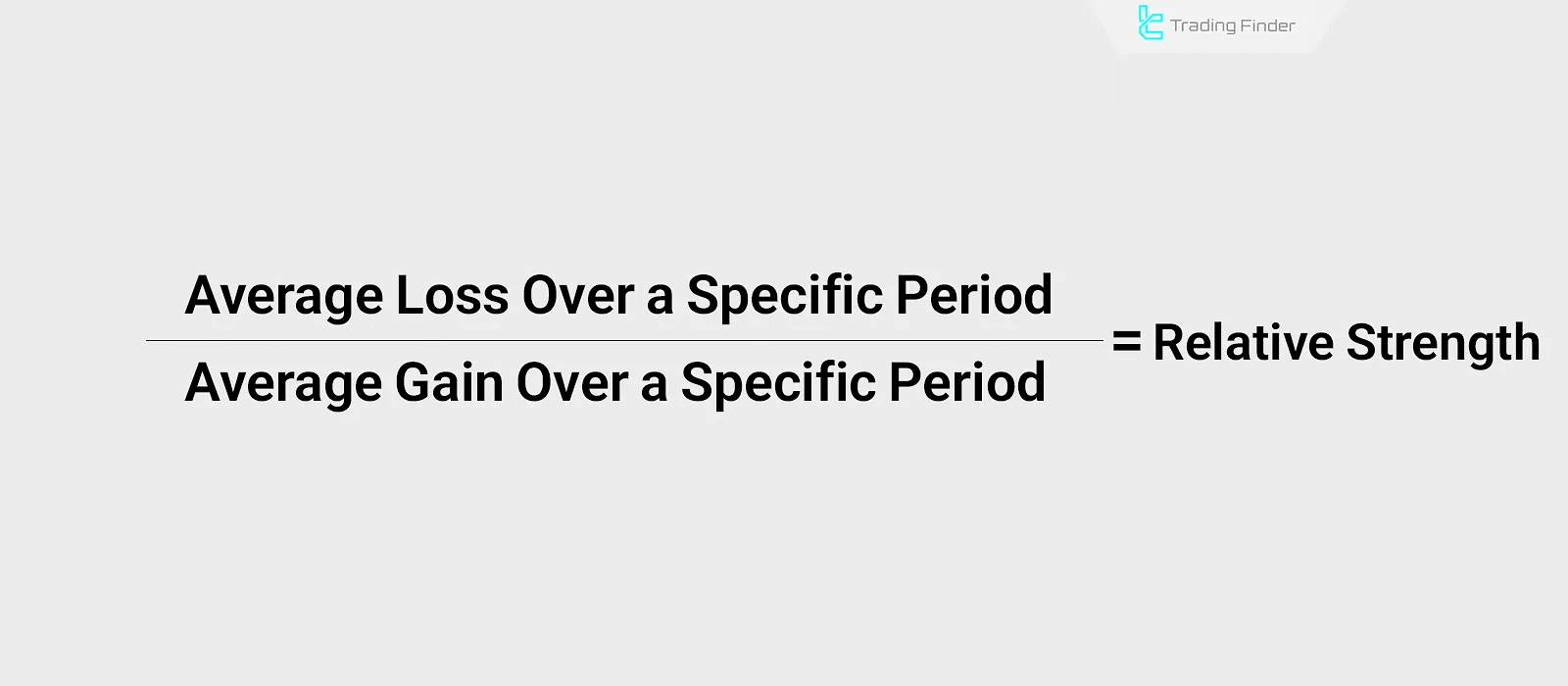
Relative Strength Index Calculation formula:
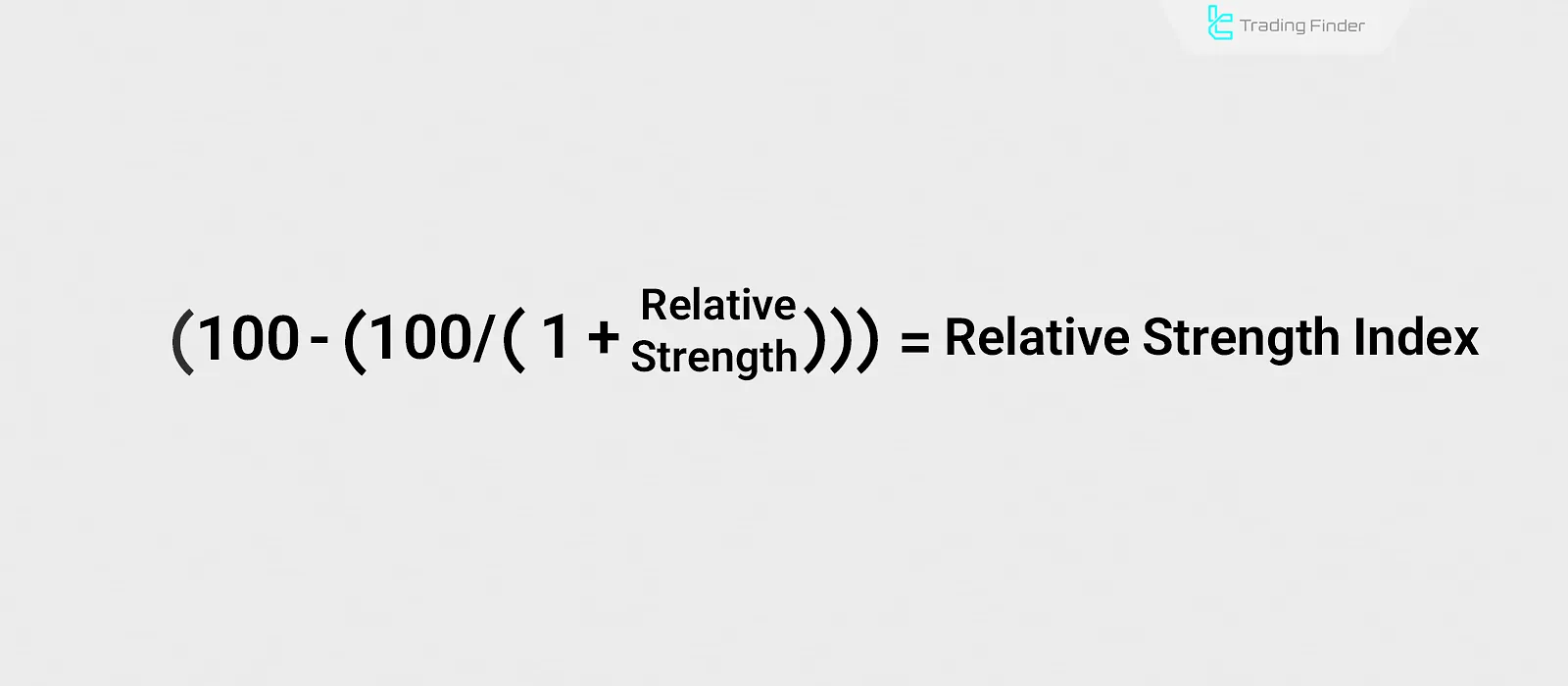
RSI Settings
The RSI indicator performs its calculations using a specific timeframe. Therefore, changing this timeframe can adjust the indicator’s performance for short-term or long-term trading strategies.
By default, RSI uses a 14-day period. Reducing this period increases the indicator’s sensitivity and produces more signals. On the other hand, increasing the period reduces the number of signals but helps minimize false signals.
What are the Applications of RSI?
By measuring trend strength, the RSI indicator is used in various scenarios such as identifying support and resistance levels, overbought and oversold conditions, divergences, and more.
Applications of RSI:
- Support and Resistance: When the RSI line reaches the middle of the display, it suggests an equilibrium between buyers and sellers, forming support and resistance zones;
- Overbought and Oversold: Entering the areas above 70 and below 30, indicates overbought or oversold conditions;
- Identifying Take Profit and Stop Loss Zones: By observing how price reacts to the main RSI levels, traders can place take profit and stop loss orders using the 0–100 RSI scale;
- Trend Continuation Confirmation: The 50 level is used to confirm the trend. For example, if the price is above 50, it confirms the continuation of a bullish trend;
- Divergence Detection: The RSI can detect both regular and hidden divergences, in both bullish and bearish scenarios.
Divergence in RSI
In general, divergence refers to a lack of alignment between price movement and the indicator.
Therefore, in the RSI indicator, if the highs or lows formed are inconsistent with those on the price chart, divergence has occurred.
Regular Divergence
Regular divergence forms in two stages:
- Formation of new highs (in an uptrend) or new lows (in a downtrend);
- Formation of RSI highs and lows in the opposite direction of the levels formed on the price chart.
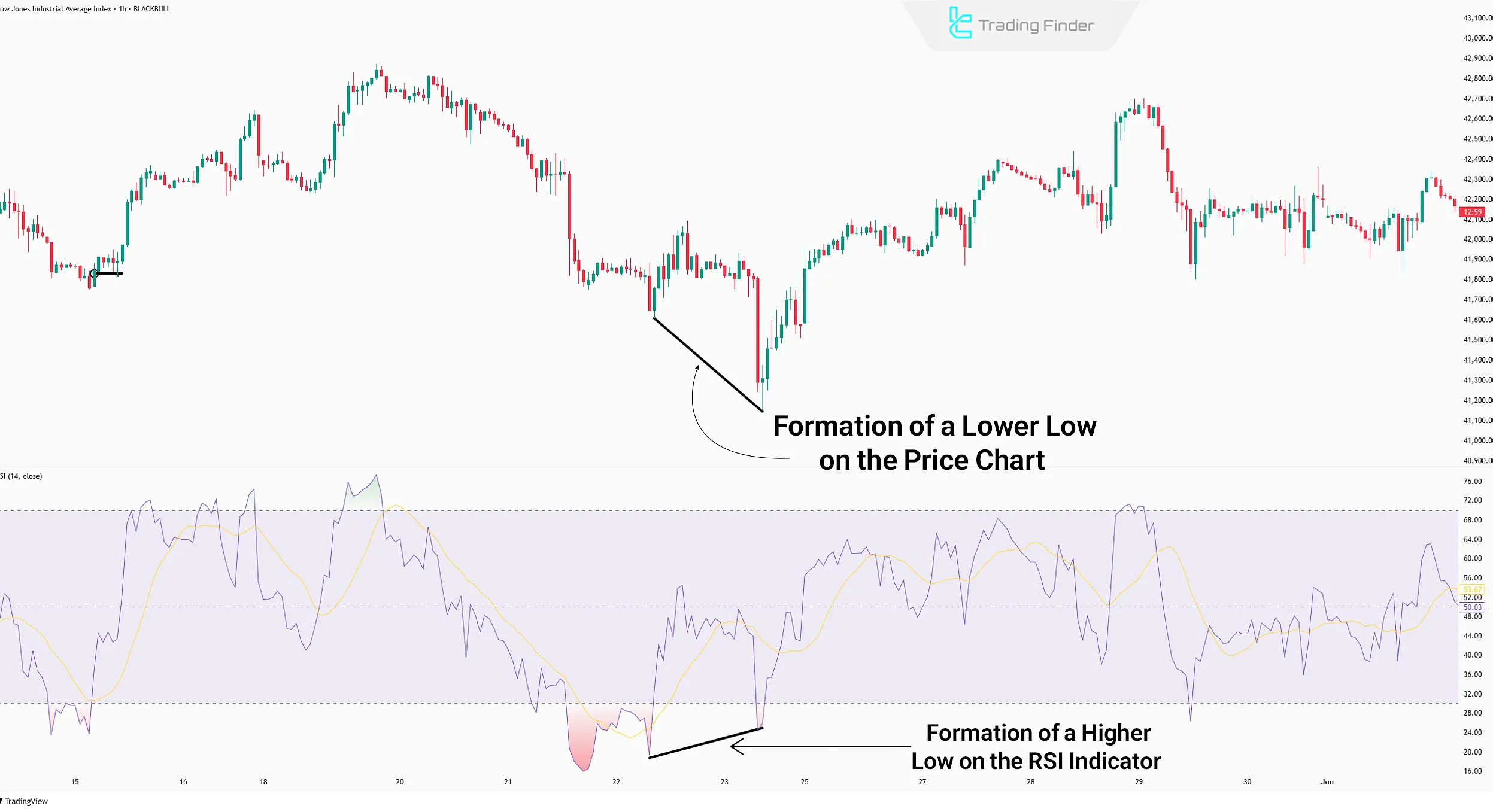
Hidden Divergence
In hidden divergence, the retracement of the trend is examined. It is formed through the following steps:
- Formation of a low (in an uptrend) or high (in a downtrend) during a price retracement;
- A mismatch between the highs/lows formed on the price chart and the RSI indicator.
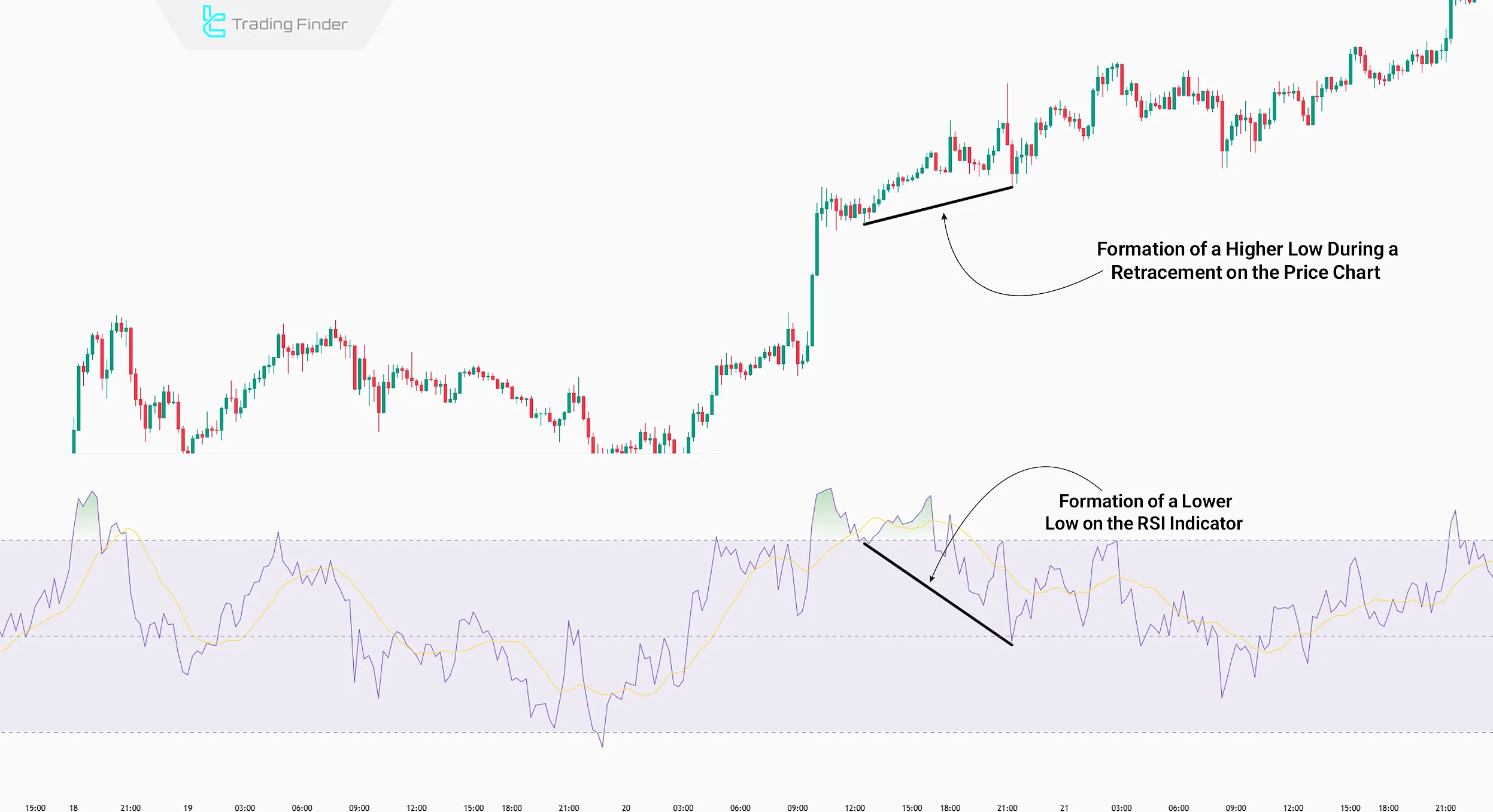
Trading Strategies Using the RSI Indicator
The RSI indicator is widely used in trading strategies due to its ability to identify divergence, support and resistance levels, and overbought/oversold zones.
Trading Strategies Using RSI:
- Divergence Strategy: In this approach, a trade entry signal is generated after identifying price divergence;
- Trendline Strategy: First, trendlines are drawn on both the RSI and the price chart. Then, when both the RSI and price hit these lines simultaneously, a trade entry signal is triggered;
- Overbought/Oversold and Support/Resistance Combination Strategy: When price hits support or resistance zones and a divergence forms on the RSI, a trade entry signal is generated in the direction of the divergence.
How to Improve RSI Performance?
Using the Relative Strength Index (RSI) on its own can carry high risk when entering trades. Therefore, combining it with other tools and concepts in technical analysis improves the success rate of trading strategies.
Although the RSI is highly compatible with most technical analysis methods, combining it with tools like classic chart patterns, candlestick patterns, or Average True Range (ATR) enhances the win rate of strategies.
Technical Tools and Concepts to Combine with RSI:
- Classic Patterns
- Candlestick Patterns
- Support and Resistance
- Stochastic Indicator
- Average True Range (ATR)
- Moving Average Indicator
Conclusion
The RSI indicator is an oscillator designed to measure trend strength. By default, it analyzes price movements over a 14-day period.
RSI can identify overbought and oversold conditions, various types of divergence, and support and resistance levels. These features make it applicable across different analysis methods and financial markets.
Since RSI derives its signals based on past market data, it naturally has some lag. Therefore, combining it with other technical analysis tools such as classic patterns, increases the success rate of trading decisions.





